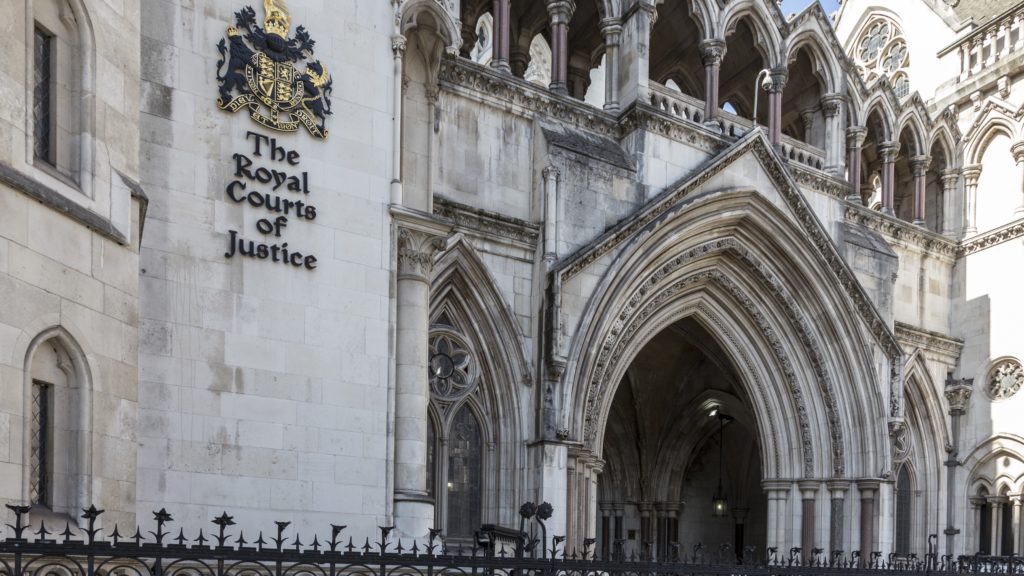On 23 May 2024, the Court of Appeal delivered Judgment in the case of Standish v Standish [2024] EWCA Civ 567, unanimously allowing the husband’s appeal from Mr Justice Moor sitting in the Family Division of the High Court.
In 2017 the husband had transferred £77 million (which included pre-marital assets) to the wife as part of a tax planning scheme, which had never been fully implemented. The total wealth was £132 million.
Moor J had concluded that as a result these assets had become ’matrimonialised’ (but not as the wife had argued, her separate property) and accordingly were subject to the sharing principle. Allowing the husband’s appeal, Lord Justice Moylan concluded that the Judge’s application of the sharing principle had resulted in ‘an unjustified division of the family’s wealth in the wife’s favour’, focussing as it did on title. Transfer of the assets did not convert the wealth into matrimonial property, the subject of the sharing principle [97].
Moylan LJ, delivering the leading Judgment, said at [108] ‘it is worth reiterating that [Section 25 of the MCA 1973] gives the court a broad discretion when exercising its powers to make financial orders’ mentioning Section 25(2)(a) ‘property and other financial resources which each of the parties to the marriage has or is likely to have in the foreseeable future’
He went on to say that ‘the issue at the heart of this appeal is the classification of property for the purposes of the application of the sharing principle; in particular, how and when property can change or move from being non matrimonial property to which it does not apply, and become matrimonial property, to which it does apply’.
Moylan LJ cited [111] Lord Nicholls’ leading speech in White v White [2001] 1AC 596 in which he said, ‘the objective must be to achieve a fair outcome’ and that in doing so ‘there is no place for discrimination between husband and wife and their respective roles’ and that accordingly, again quoting Lord Nicholls ‘equality should be departed from only if until the extent that there is a good reason for doing so’. Lord Nicholls said (at para 611) ‘it was well established that ‘the parties’ proprietorial interest should not be allowed to dominate the picture’.
Of relevance in the Standish appeal [121] was that in White Lady Hale and Lord Nicholls identified the importance of the source of assets, in particular whether they were the fruits of the marital partnership or were ‘brought into the marriage’ Lady Hale differed from Lord Nicholls in that she considered there might be scope for a difference of treatment of business or investment assets generated by one party during the marriage, depending upon the length of the marriage.
Moylan LJ cited [126] the judgment in Charman v Charman no 4 [2007] which identified ‘matrimonial property’ as ‘the property of the parties generated during the marriage otherwise than by external donation’.
Finally in his review of the legal principles, Moylan LJ referred to XW v XH [2020] 4 WLR 22 quoting his own Judgment in that case in which he said, ‘marital properties now recognised as being property, which is the product of, or “reflective of” marital endeavour’.
In K v L [2011] EWCA Civ 550 Lord Justice Wilson said that ‘the importance of the non-marital source of the assets may diminish over time’ citing an example ‘when non matrimonial property has been mixed with matrimonial property in circumstances in which the contributor may be said to have accepted that it should be treated as a matrimonial property’ [141].
Moylan LJ concluded that ‘it is clearly established that in the application of the sharing principle, the source of an asset is the crucial factor and not entitlement’. He also observed that he was ‘not persuaded that the absence of a pre-nuptial agreement is of any relevance’, citing the Judge in rejecting the wife’s submission that ‘the absence of a pre-nuptial agreement is not significant’. The fact that the parties did not enter into such an agreement does not ‘impact on the application of the sharing principle’ [156].
Matrimonialisation of assets, was defined by Moylan LJ as being a question ‘about when an asset or assets which were at one stage non marital property might be included within the sharing principle’. He expressed a clear view that the concept of matrimonialisation should continue to be applied, but significantly, he concluded, at that ‘the concept of matrimonialisation should be applied narrowly’ and ‘remains a question of fairness’.
Moylan LJ proposed a reformulation of circumstances envisaged by Wilson LJ in K v L, including the extend and manner ‘in which non-matrimonial property has been mixed with matrimonial property means that in fairness, it should be included within the sharing principle’, when the question should be whether it is included in the sharing principle but not automatically lead to that asset being shared equally. He framed the question as ‘does fairness require or justify the asset being included within the sharing principle?’
It is already established that in cases where non marital assets or property has been used in the purchase of the family home, the court usually, though not always, conclude that the matrimonial home should be shared equally (but subject to need).
The Court of Appeal remitted the matter for determination of the needs principle (if the parties could not reach agreement), as the Judge had not undertaken a needs assessment. The wife would be required to persuade the court that £25 million was insufficient to meet her reasonable needs.
In many cases encountered in practice of more modest means, where most assets whatever the source are utilised for family purposes, it is difficult to discern a clear dividing line between pre-owned assets and those generated within the marriage as there is mingling of assets, to a lesser or greater extent. Mylan LJ emphasised in Standish that ‘when there is not a clear dividing line between matrimonial and non-matrimonial property, the court is not required to enter into an investigation or analysis which is neither proportionate nor feasible but can undertake a broad evidential assessment’.
Therefore, a lack of clarity as to what are pre-marital assets does not preclude an impressionistic assessment of what may constitute a fair departure from equality to reflect non- marital assets.
In considering a fair distribution of assets, following Standish, source and shared endeavourer are key factors, and title is not determinative or even a guide to fairness.
The ownership of assets may not be reflective of how the parties administer or view their assets during the course of the marriage, or how they consider they should be treated upon marriage breakdown. The Standish judgment reiterates White that there is no place for discrimination and provides protection in those cases where one party to a marriage considers that they can maintain or enforce a financial advantage by placing or retaining assets in their sole name; a situation often arising in cases where there is control or coercion. The ‘narrowing’ of matrimonialisation, relevant mainly in big money cases, may not impact the outcome in the majority of cases, but matrimonialisation will continue to remain a matter of fairness.
Click here to access citations.
iFLG
The International Family Law Group LLP
www.iflg.uk.com
© September 2024
- iFLGhttps://iflg.uk.com/about-us
- iFLGhttps://iflg.uk.com/about-us
- iFLGhttps://iflg.uk.com/about-us
- iFLGhttps://iflg.uk.com/about-us










